is



is


ANNAPOLIS SYMPHONY .ORG
By:
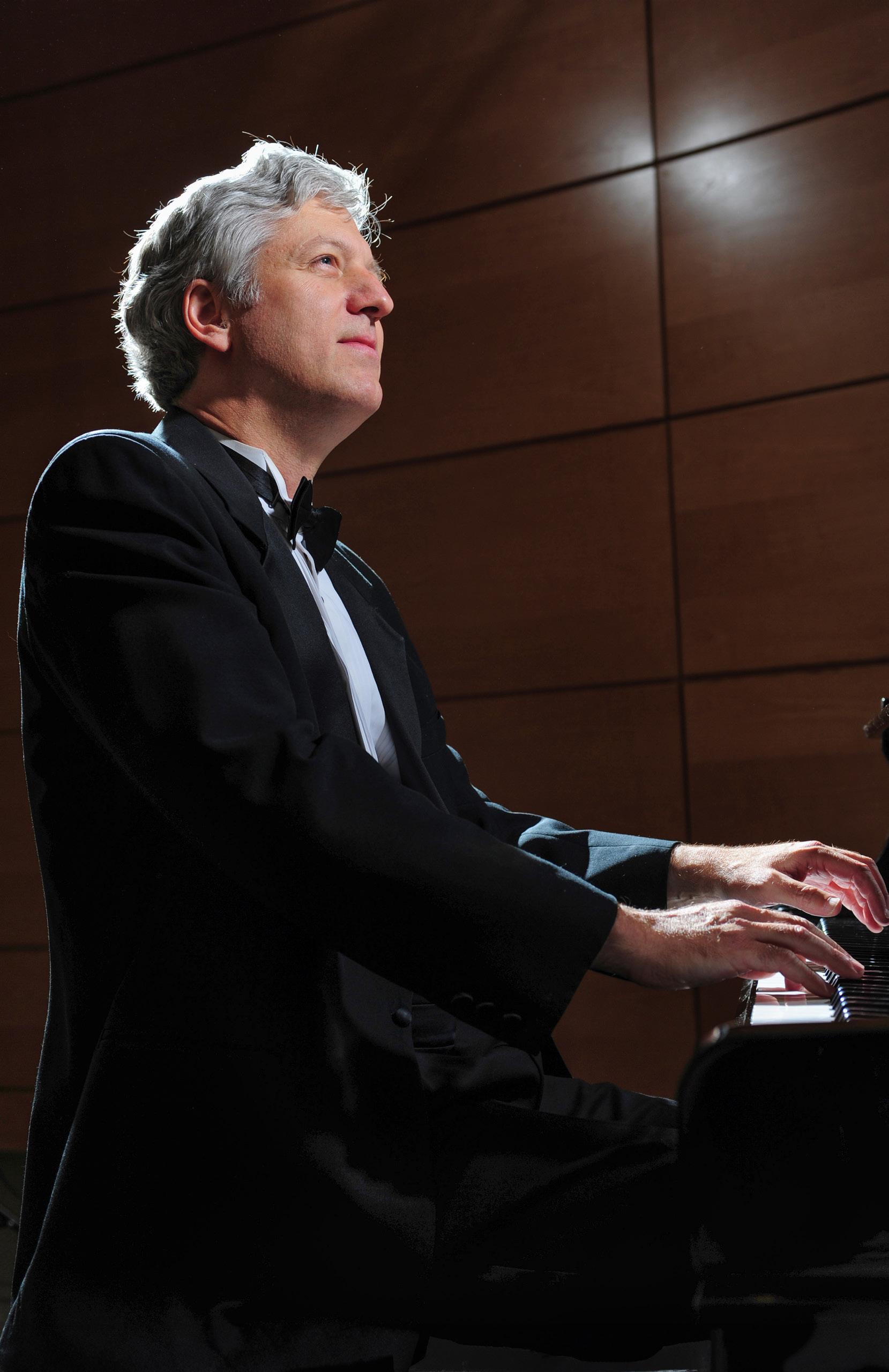




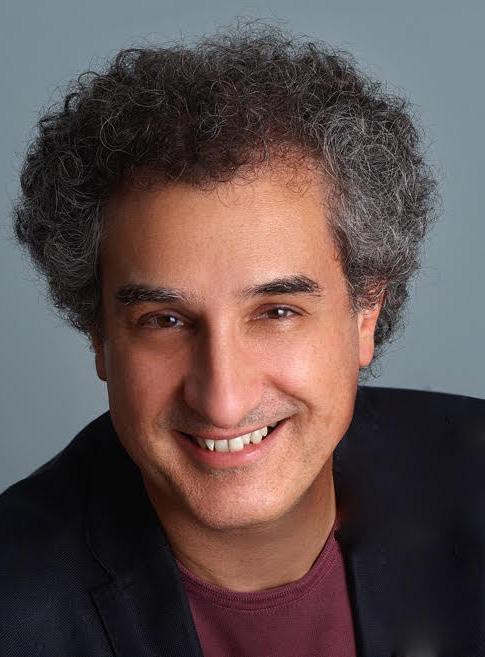
As we embark on this exciting season, I am thrilled to invite you to join us for a journey that celebrates music’s power to connect us across time, places, and experiences. This year is particularly special as it is filled with anniversaries and milestones that highlight the transformative nature of music and its enduring relevance.
Among the many anniversaries, we honor the 200th of Anton Bruckner, 190th of Camille Saint-Saëns, 150th of Samuel Coleridge-Taylor and Maurice Ravel, and 135th of William Grant Still’s birth, alongside the 50th anniversary of Dmitri Shostakovich’s passing. These composers have shaped the history of music, and we are proud to share their timeless works with you. As you might have noticed, I am also celebrating a personal milestone—my 20th anniversary as conductor of this orchestra—an honor that has only deepened my commitment to the artistic and cultural mission we carry forward together.
This season, the most significant anniversary we mark is the 60th of the Civil Rights Act, a piece of legislation that codified core humanitarian values that have enriched our society immeasurably. It serves as the central theme of this year’s concerts, guiding us in our exploration of diversity, inclusion, and equity. Many of the composers and artists featured this season have long championed these values in their music, often foreshadowing the conversations we continue today. Through their works, we pay tribute to the ideals that move us toward a more just and harmonious world.
There is much to look forward to in our upcoming performances. We welcome back beloved ASO guest artists Brian Ganz, Noah Bendix-Balgley, and our own Netanel Draiblate. We are proud to present the American première of Óscar Navarro’s Connection, a French Horn Concerto featuring our talented Alex Kovling, as well as the world première of a new work by Roydon Tse, a continuation of our multi-year collaboration with the Gabriela Lena Frank Creative Academy of Music. This cocommissioning project brings fresh voices to the stage, in this instance, showcasing the Hispanic Dalí Quartet as soloists.
In addition to timeless masters like Mozart, Beethoven, and Ravel, the ASO will be bringing you the powerful music of Tania León, William Grant Still, Adolphus Hailstork, Alberto Ginastera, Samuel Coleridge-Taylor, Sonia Morales-Matos, and many others. These diverse voices offer a rich tapestry of musical expression that speaks to the very core of our mission. And of course, we’ll take a moment to relax and have some fun during our ever-popular Holiday Pops concert, now with an additional performance in Severna Park.
On a personal note, this season allows me to share music that is deeply meaningful to me. Mozart’s Piano Concerto No. 23, the first piece I ever played in an orchestra, left an indelible mark on me as a young musician. Many of our featured artists— Noah Bendix-Balgley, Netanel Draiblate, and members of the Dalí Quartet—are musicians I have had the privilege of mentoring, watching their careers blossom. I am particularly proud of the continued partnership with the Gabriela Lena Frank Creative Academy of Music, which has been a cornerstone in fostering emerging talent.
At the heart of this season is the belief that art leads the way in creating a better world. The music we present this year bridges past and present, light and dark, and diverse perspectives, reminding us of art's essential role in shaping our understanding of humanity. ASO’s 63rd season is a celebration of connection— between composers, artists, and audiences—creating a path forward to a more inclusive and harmonious future.
On behalf of the Annapolis Symphony Orchestra, I extend my heartfelt gratitude for your support and look forward to sharing with you the joy and inspiration of this extraordinary season.
Warm regards,
José-Luis Novo
Artistic Director and Conductor

The Philip Richebourg Chair

What’s Up? Media has been a proud supporting partner of the Annapolis Symphony Orchestra for over 25 Years.

“Music Matters” is not just a tag line. It is why we do what we do at the Annapolis Symphony Orchestra (ASO) and the Annapolis Symphony Academy (ASA).
Music matters because it connects us as we sing along at a concert. Music matters when we hear the tone of a favorite instrument, the melody of a grandmother’s beloved hymn, the chant of a cantor, or the memory of a wedding dance.
At the ASO, we believe that music matters to our culture. That’s why our 63rd season honors the year of Maryland civil rights and the 60th anniversary of the Civil Rights Act. This landmark legislation reshaped our nation, influencing our culture, including music. This upcoming season features works from composers and artists whose music continues to inspire and unite us.

Music matters to health. That’s why the ASO brings music to those in rehabilitation facilities, frontline workers, and volunteers at hospitals, to hospice, community centers, and The Wellness House.
Music matters to education. ASO makes music and music education accessible through free concerts in the community, school visits, discounted Masterworks tickets, and its ASA, which is entering its seventh year. The ASA has provided over $400K in need-based scholarships to local kids for private instruction on instruments, and it offers four ensembles free for all students. The ASO and ASA partnered with our community to bring 83 performances last season (23,125 attendees) with 56 performances free (14,220 attendees).
Music matters to community. Take the ASO’s Pops in the Park concert last month. I was in awe as 5,000 people clapped to Hoe Down as our esteemed maestro, Jose-Luis Novo, played the harmonica! Who knew? That’s when the music took me back. My late husband loved that concert. We went every year. He made an elaborate meal, tucked it into the trunk of the scooter, and off we went with a blanket under my arm. That memory still makes me smile.
Why does music matter to you? Does it sooth your soul, relax you after a hectic day, make you dance, fill you with cultural pride? If you share our belief that music matters, join us. Buy a ticket, donate, join the Friends of the Annapolis Symphony (FASO), attend a dress rehearsal (it’s free), join the pre-concert lecture, post your experience on Facebook or Instagram (#ASOAwesome, #MusicMatters). Whatever it is, we want to know. With your help, we can spread the word because…music matters.

Shelley Row, Chair, Board of Trustees Annapolis Symphony Orchestra
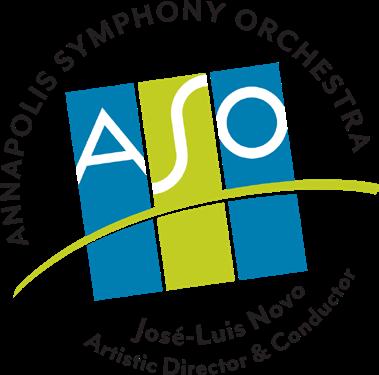
SHELLEY ROW, PE, CSP Chair
KATHERINE EDWARDS, MD Vice Chair
ANN WHITCOMB Vice President-Finance
ROBERT ARIAS
GEORGIANNA CROSBY
WILLIAM DAVIS GINGER FROM SONJA GLADWIN
CHARLIE GRUDZINSKAS
COLLOT GUERARD
MICHELLE HELLSTERN
WILLIAM HOFF
DEB HOWE
TRUSTEE EMERITUS
MONIQUE Y. LANGSTON Secretary
STEPHEN SOTACK Treasurer
GERALDINE “MIMI” LADD JONES
JEANNE KELLY
ELIZABETH MAXWELL-SCHMIDT, MD
MARY MCKIEL, PHD Immediate Past Chair
MARIE TREANOR
FLORENCE CALVERT JILL KIDWELL
JOSÉ-LUIS NOVO
Artistic Director & Conductor
ANN TRAN FASO Board Representative
ORCHESTRA REPRESENTATIVE
ALEXANDRA MIKHLIN
Musicians’ Representative, Players’ Committee
The mission of the Annapolis Symphony Orchestra is to inspire, educate, and enrich lives near and far by creating extraordinary musical experiences with uncompromising artistic excellence.
With a 63-year history of artistic excellence, the Annapolis Symphony Orchestra is recognized as the largest and most distinguished performing arts organization in Maryland’s capital city. Under the direction of José-Luis Novo, the Symphony continues to rise in excellence and national reputation, performing Masterworks, Pops, Family Concerts, and special events. The Symphony reaches thousands annually with its free Pops in the Park concert, performances in partnership with the United States Naval Academy and the Annapolis Opera, and collaborative projects with other arts organizations and touring headliners. Additionally, ASO sponsors award-winning education concerts and outreach programs in community schools, sharing the joy of music-making with thousands of school children, including through the Annapolis Symphony Academy (ASA).
ERICA BONDAREV RAPACH
Interim Executive Director
JULIE NOLAN Director of Community Outreach, Grants Manager
SARAH JOHANSEN Director of Business Operations
OLIVIA REN Orchestra Librarian
MIRIAM FOGEL Director of Artistic Operations
MAYA MCATEE Office & Data Manager
DIANA LOVE Director of Marketing & Communications
DAVID SCIANNELLA Operations Manager
ANNAPOLIS SYMPHONY ACADEMY STAFF
NETANEL DRAIBLATE
ASA Director
HEATHER HAUGHN
ASA Department Head, Strings
KIMBERLY VALERIO
ASA Chair, Winds & Brass
JULIE NOLAN Director of Education
ANTHONY VALERIO
ASA Conductor, Aquarius Wind Ensemble
ANNAPOLIS SYMPHONY ORCHESTRA 801 CHASE STREET, SUITE 204| ANNAPOLIS, MD 21401 410-263-0907 (BOX OFFICE) | 410-269-1132 (ADMIN)
SHUN YAO
ASA Assistant Conductor
Under writer, The Philip Richebourg Ar tistic Director and Conductor ’s Chair

THE PHILIP RICHEBOURG ENCORE CIRCLE honors multi-annual pledges of $100,000+
Elizabeth Richebourg Rea, in honoring the legacy of her father, Co-Founder of the Annapolis Symphony Orchestra, created a legacy of her own. In 2011, she donated the largest single contribution in the history of the orchestra for the 50th Anniversary Season. This generosity transformed giving by inspiring future endowments of substantial amounts in addition to pledges spanning multiple years. Her pioneering leadership has created new levels of support, enabling the A SO to expand our work on stage and in the community. Elizabeth is underwriter of the Artistic Director and Conductor’s Chair in her father’s name and in addition is the founding member of the Philip Richebourg Encore Circle.
Elizabeth Rea is a fine ar t photographer and curator She has curated numerous Joseph Cornell exhibitions and two Roy Lichtenstein Retrospectives. Elizabeth is President of the Dungannon Foundation, sponsor of the Rea Award for the Shor t Stor y. She ser ves on the Peggy Guggenheim Advisor y Board and is an Honorar y Trustee of the Solomon R Guggenheim Foundation.
Co-Founder and First Board President Annapolis Symphony Orchestra

1972
“My father Philip Richebourg conducted his own orchestra ever y da y of his life. He personified exactitude and precision in business; in ser vice to his community and in leadership on numerous Boards. He was meticulous in his passions as pilot, musician, archi vist. Dedicated to each task at hand my father approached all things in life as if resolute in achieving one goal, that of per fect harmony ” professional orchestra, Philip was at the helm every step of the way. His commitment, dedication, and passion for musical awareness leaves an indelible mark on the history of the A SO. The Annapolis Symphony Orchestra would not be what it is today without him.
The Annapolis Symphony Orchestra is indebted to Philip Richebourg, Co-Founder and First Board President (1967-1974). Philip Richebourg ’s stalwart support, organizational vision and strong leadership during its formative years helped solidify the orchestra financially and administratively, ensuring its longevity and signature as one of Maryland’s most distinguished performing arts organizations. Philip passionately supported the Annapolis Symphony Orchestra as it sought to enrich the lives of the community through classical music and educational programs. From the modest beginnings of a small community ensemble to the present acclaimed



The Season 63 Masterworks Series is made possible by the Brian and Patricia Giese Foundation


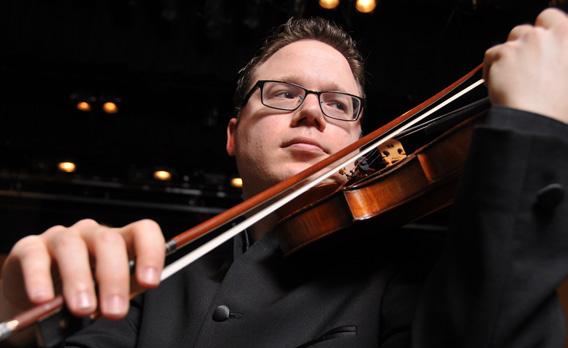


MASTERWORKS I PASAJES
Tania León, Mozart, Bruckner, Still with pianist Brian Ganz
Oct 4 & 5 | 7:30 pm
Maryland Hall
Oct 6 | 3:00 pm
Music Center at Strathmore
MASTERWORKS II CONNECTIONS
Adolphus Hailstork, Óscar Navarro, Shostakovich with hornist Alex Kovling
Nov 1 & 2 | 7:30 pm
Maryland Hall
MASTERWORKS III PICTURES AT AN EXHIBITION
Coleridge-Taylor, SaintSaëns, Mussorgsky with violinist Netanel Draiblate
Jan 31 & Feb 1 | 7:30 pm
Maryland Hall
Feb 2 | 3:00 pm
Music Center at Strathmore
MASTERWORKS IV SERENADE
Beethoven, Bernstein, Ginastera with violinist Noah BendixBalgley
Feb 28 & Mar 1 | 7:30 pm
Maryland Hall
Mar 2 | 3:00 pm
Music Center at Strathmore
MASTERWORKS V FIESTA
Roydon Tse (world première ASO Co-commission), Sonia Morales-Matos, Ravel with the Dalí Quartet
Apr 4 & 5 | 7:30 pm
Maryland Hall

Masterworks Series and Series @ Strathmore subscribers receive 20% off single tickets to the Maryland Hall performance!
Dec 13 | 7:30pm at Maryl and Hall
Dec 14 | 3:00pm at Severna Park High School

Our annual concert for families promises to inspire a love for classical music and performing arts for students grade 3-12, and their family, friends, and caregivers. Tickets are $10.
May 10 | 11:00am
Maryland Hall

Join us for an exciting field trip concert that will take your students on a rhythmic journey through the world of dance! Tickets are just $5 per student or adult. To purchase tickets call our Box Office at 410-263-0907
May 8 | 10am & 11:30am
Maryland Hall
May 9 | 10am & 11:30am
Chesapeake Arts Center
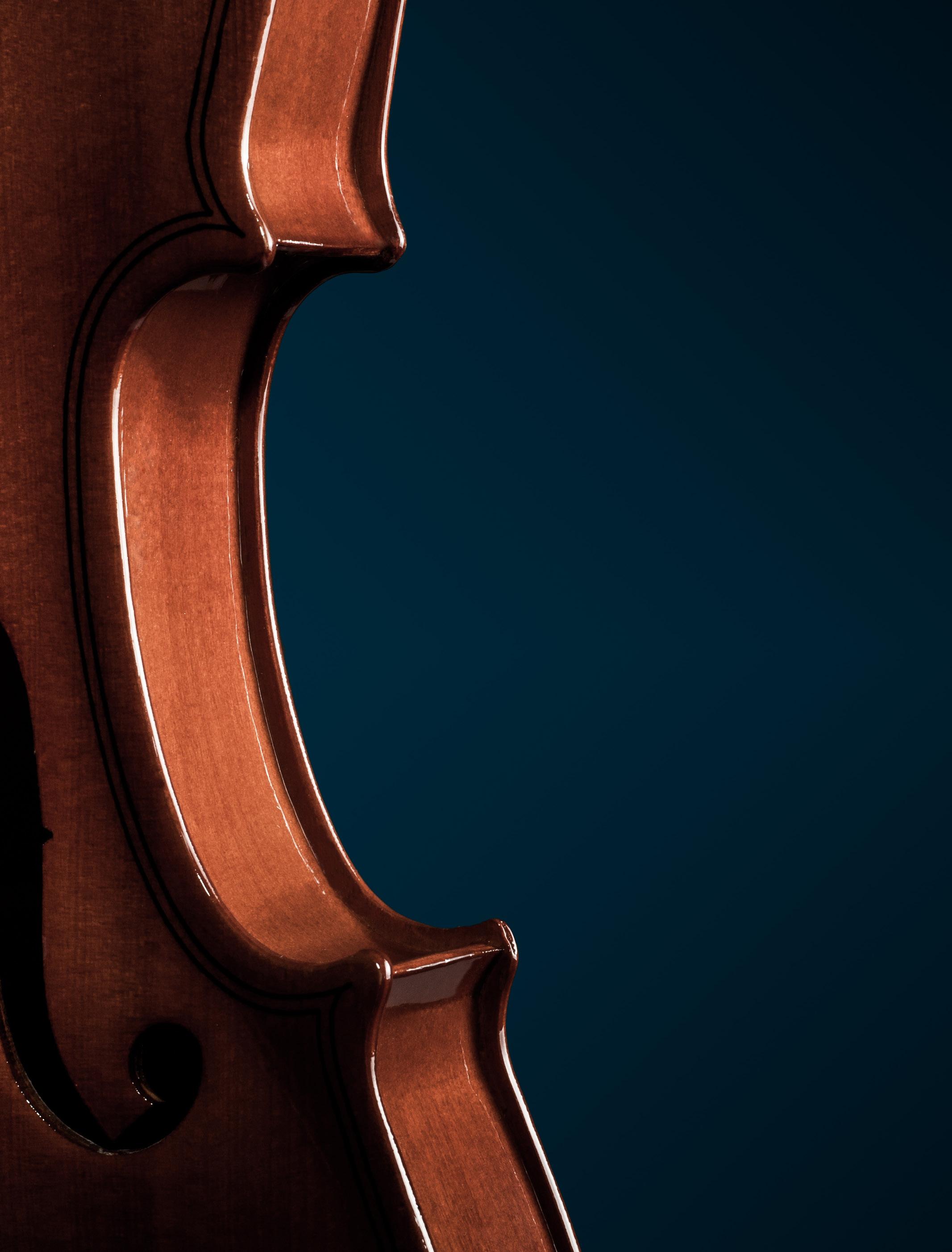
MASTERWORKS I Pasajes
Tania León, Mozart, Bruckner, Still with pianist Brian Ganz
SUN OCT 6 | 3:00 PM
Music Center at Strathmore
MASTERWORKS III Pictures at an Exhibition
Coleridge-Taylor, Saint-Saëns, Mussorgsky with violinist Netanel Draiblate
SUN FEB 2 | 3:00 PM Music Center at Strathmore
MASTERWORKS IV Serenade
Beethoven, Bernstein, Ginastera with violinist Noah Bendix-Balgley
SUN MAR 2 | 3:00 PM Music Center at Strathmore 7 7
ANNAPOLIS SYMPHONY .ORG
ANNAPOLISSYMPHONY.ORG/SUBSCRIBE
MASTERWORKS I PASAJES
MOZART PIANO CONCERTO NO. 23 WITH BRIAN GANZ
FRI OCT 4, 2024
SAT OCT 5, 2024 7:30 pm | Maryland Hall
SUN OCT 6, 2024
3 pm | Music Center at Strathmore


MASTERWORKS II CONNECTIONS
CONNECTION WITH ALEX KOVLING, HORN
FRI NOV 1, 2024
SAT NOV 2, 2024 7:30 pm Maryland Hall
MASTERWORKS IV SERENADE
BEETHOVEN, BERNSTEIN, AND BENDIX-BALGLEY
FRI FEB 28, 2025
SAT MAR 1, 2025 7:30 pm | Maryland Hall
SUN MAR 2, 2025 3 pm | Music Center at Strathmore
MASTERWORKS III PICTURES AT AN EXHIBITION
SAINT-SAËNS VIOLIN CONCERTO NO.3, WITH NETANEL DRAIBLATE
FRI JAN 31, 2025
SAT FEB 1, 2025
7:30 pm | Maryland Hall
SUN FEB 2, 2025
3 pm | Music Center at Strathmore
MASTERWORKS V FIESTA
RAVEL DAPHNIS ET CHLOÉ WORLD PREMIÈRE BY ROYDON TSE WITH DALÍ QUARTET
FRI APR 4, 2025
SAT APR 5, 2025 7:30 pm Maryland Hall
EXPLORE OUR SUBSCRIPTIONS AND TICKET OPTIONS NOW ON OUR WEBSITE AT ANNAPOLIS SYMPHONY .ORG
BUY A FLEXPASS FOR AS LITTLE AS

The ASO FlexPass lets you choose 3 or 4 Friday or Saturday Masterworks Concerts.

ALEX KOVLING
Masterworks II Connections
Adolphus Hailstork, Óscar Navarro, Shostakovich with hornist Alex Kovling

CHOOSE AND KEEP YOUR FAVORITE SEAT WHEN YOU BUY YOUR FLEXPASS TODAY! BUY
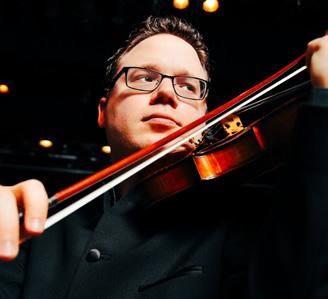
NETANEL DRAIBLATE
Masterworks III Pictures at an Exhibition
Coleridge-Taylor, Saint-Saëns, Mussorgsky with violinist
Netanel Draiblate NOAH BENDIX-BALGLEY

Masterworks iV Serenade
Beethoven, Bernstein, Ginastera with violinist Noah Bendix-Balgley

DALÍ QUARTET
Masterworks v Fiesta
Roydon Tse, Sonia MoralesMatos, Ravel with Dalí Quarte t
Pasajes
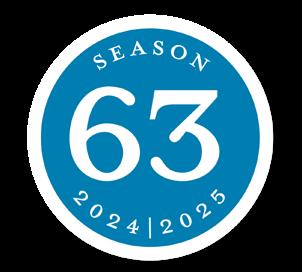
October 4, 7:30 PM | October 5, 7:30 PM
MARYLAND HALL
José-Luis Novo, Artistic Director & Conductor The Philip Richebourg Chair
Brian Ganz, piano
Tania León (b. 1943)
Piano Concerto No. 23 in Wolfgang Amadeus Mozart A major, K. 488 (1756–1791)
I. Allegro
II. Adagio
III. Allegro assai
Brian Ganz, piano
- INTERMISSION -
Symphony No. 3 in D minor (1889 version) Anton Bruckner (1824–1896)
II. Adagio, bewegt, quasi Andante
Symphony No. 1, “Afro-American”
I. Moderato assai
II. Adagio
III. Animato
IV. Lento, con risoluzione
William Grant Still (1895–1978)
Photography and video/audio recording are not permitted in the concert hall. Please silence all electronic devices. Thank you.
The Season 63 Series @ Strathmore is made possible by an anonymous donor. Thank you for your support and generosity. If you are interested in supporting the ASO financially, please email Development@AnnapolisSymphony.org
Nicholas Currie, Acting Concertmaster
Hanbing Jia, Acting Associate Concertmaster
Heather Haughn, Acting Assistant Concertmaster
Abby Armbruster
Susan Benac
Rachael Stockton
Wan-Chun Hu
Katelyn Lyons Peaden
Amelia Giles
Justin Gopal
Claudia Chudacoff
Jennifer Rickard
VIOLIN II
Christian Tremblay, Principal
Kristin Bakkegard, Associate Principal
Megan Gray
Alexandra Mikhlin
Karin Kelleher
Angela YuTing Chew
Kei Sugiyama
Sara Schneider
Laura Knutson
Essena Setaro
VIOLA
Sarah Hart, Principal
Derek Smith, Associate Principal
Brian Shoop
Kate Zahradnik
Heidi Remick
Ji young Nam
Michael Sinni
Nikki Ponticelli
Todd Thiel, Principal
Pei Lu, Associate Principal
Nicole Boguslaw
April Studeny
Catherine Mikelson
Daniel Shomper
MaryAnn Perkel
Katie McCarthy
BASS
Patrick Raynard, Principal
Benjamin Crofut, Associate Principal
Brandon Smith
Peter Cohn
Adriane Irving
Jason Gekker
FLUTE
Kimberly Valerio, Principal
Lauren Sileo
Lori Kesner
OBOE
Fatma Daglar, Principal
Rick Basehore
Amanda Dusold
CLARINET
Brian Eldridge, Acting Principal
David Drosinos
Edna Huang
Sara Reese
BASSOON
Asha Kline, Principal
Patricia Morgan
Lynn Moncilovich
HORN
Alex Kovling, Principal
Shane Iler, Associate Principal
Ho Hin Kwong
Anthony Valerio
Kevin Grasel
TRUMPET
Andrew Fremder, Acting Principal
Thomas Bithell
Kristopher Westrich
TROMBONE
David Sciannella, Acting Principal
Katie Thigpen
Jay Heltzer
TUBA
Jake Fewx, Principal
TIMPANI
Curt Armbruster, Principal
PERCUSSION
Robert Jenkins, Acting Principal
Aubrey Adams
Thomas Maloy
HARP
Maryanne Meyer, Acting Principal
KEYBOARD
Tomoko Kanamaru, Acting Principal
BANJO
Christopher Peterson
A delightful program of holiday music for all ages
DECEMBER 13
MARYLAND HALL


DECEMBER 14
SEVERNA PARK HIGH SCHOOL
Masterworks Series and Series @ Strathmore subscribers receive 20% off single tickets to our Holiday Pops performance at Maryland Hall only.
Connect young listeners to a lifelong love for music

Our annual concert for families promises to inspire a love for classical music and performing arts for students grade 3-12, and their family, friends, and caregivers.
MAY 10, 2025 | 11 AM


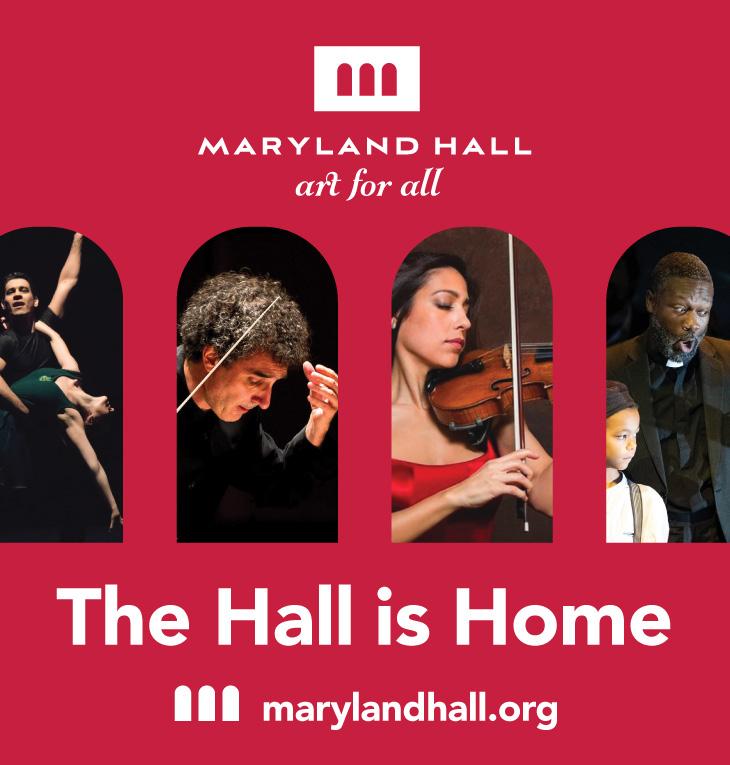

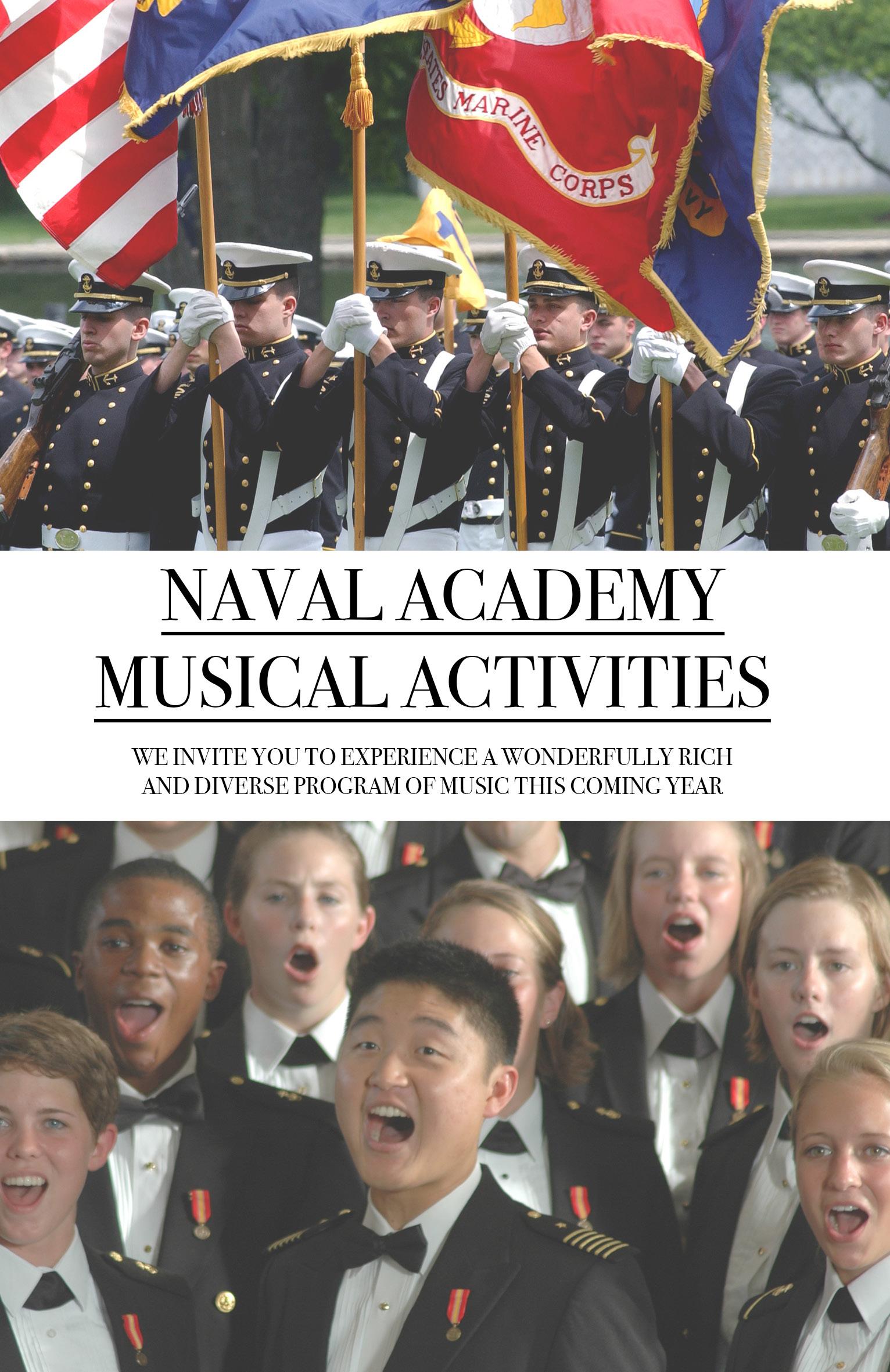

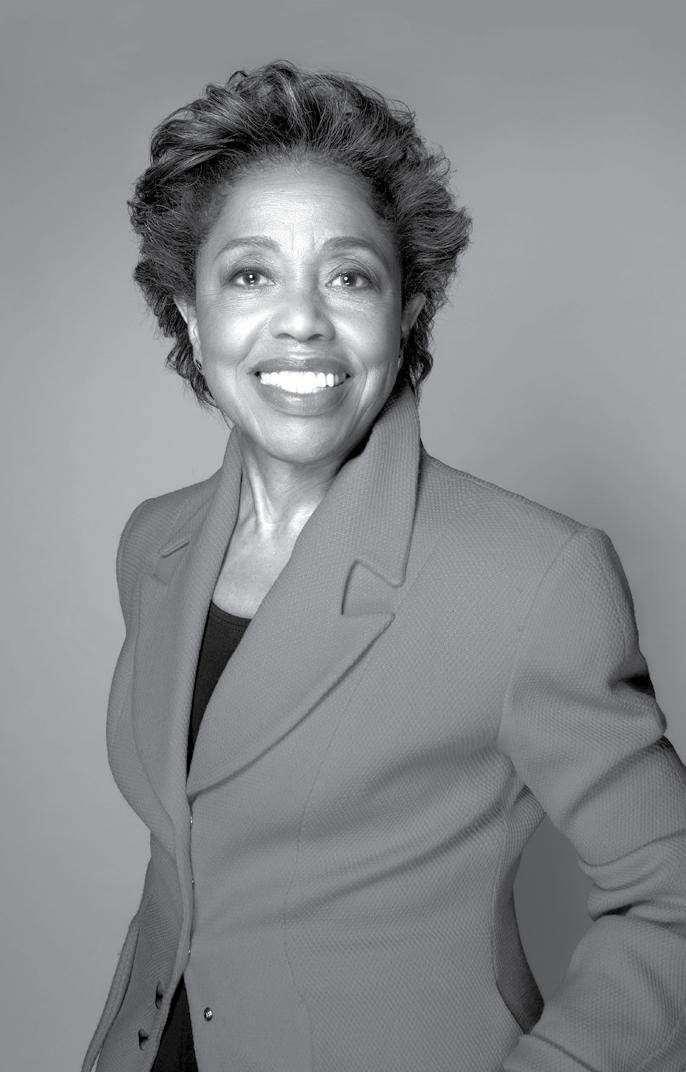
Born in Cuba, Tania León credits her grandmother’s radio for her introduction to music, as she would dance and sing to any station, no matter the musical genre. Her family noticed her talent and quickly enrolled her in lessons, and her grandfather bought her a used piano when she was five. After receiving degrees from the Peyrellade Conservatorio de Música, León moved to the United States to begin her career as a pianist. Though she originally intended to eventually move to France, León stayed in the US, settling in New York as she studied composition and working as a pianist, conductor, and composer.
León describes her musical education in Cuba as “inclusive;” it was rooted in improvisation and focused on a wide variety of genres and styles. This background
remains evident in León’s compositions, which pull from a diverse set of classical and popular music traditions, especially those from African American, African, and Cuban cultures. She explores a large palette of harmonic and rhythmic structures in each of her works as well as her entire oeuvre. Instead of thinking of harmony as a rigid structure, León thinks of it as an atmosphere or a “background that envelops whatever is happening in the piece,” as if “each piece has their own habitat, their own planet.” The majority of León’s works have programmatic titles, or titles that suggest a story, revealing her interest in creating a relationship between herself, the sounds she encodes in her music, and listeners. León thinks of music as “organic, something alive,” for even though she has written notes on a page, she recognizes that each performance—with a different conductor and different musicians— will sound unique.
Pasajes , or “passages,” refers to the different vignettes and sound worlds evoked in the piece. León describes Pasajes (2022) as a series of “postcards […] as though you were observing an album of photographs, and that each passage [has] a different atmosphere.” What those photographs depict is up to the listener; León prefers to leave her descriptions vague, recognizing that each audience member can hear different stories. The piece beings with a slow, “haunting” melody in the muted strings that León hears as her “interpretation of the spirit of Latin America.” The piano and vibraphone change the tone, and the piccolo enters with a flutter tongue, a technique that changes the timbre of the instrument. This piccolo and flute line recurs throughout the piece, like a thread that comes and disappears, always weaving the different pictures together. León describes this thread as a bird, reminiscent of birdsong but also flying over the different passages to take us through the journey. In the different sections of the piece, we hear the diverse influences on her style in the exploration of timbre, jazzy trumpets, and Afro-Cuban interlocking dance rhythms in the strings. An extended timpani solo leads
into a loud brass fanfare, underscored by a rhythmic drive in the percussion. León views the “bombastic” ending as “happiness or discovery that all these events made her grow into something that she appreciates [… and] of the spirit, witnessing the marvelous picture of earth, of life.”

Born Jan. 27, 1756, Salzburg
Died Dec. 5, 1791, Vienna
Wolfgang Amadeus Mozart is now considered one of the most canonic composers of Western art music and of the Classical era. A child prodigy, the young Wolfgang was educated alongside his elder sister Maria Anna “Nannerl” Mozart, who was also a prodigy. The siblings were taught by their father, Leopold, who was a violinist, composer, teacher, and the manager of his children’s early careers. Beginning in 1762, the young Nannerl and Wolfgang toured Germany and Austria, performing for Empress Maria Theresa and other
notable figures. Next came an international tour—covering Germany, France, the Low Countries, England, and Switzerland—that lasted for over three years, followed by an extended stay in Vienna. After this, Nannerl was prohibited from continuing her public career, due to the contemporaneous expectations on women and her parents’ enforcement of them. Wolfgang, just entering his teenage years, therefore became the musical focus of his father and family.
As he gained international renown as a keyboardist, Mozart also composed, learning from the musicians he met on his travels and developing his own style. Mozart was highly prolific in several genres, including the symphony, string quartet, sonata, opera, mass, and, of course, the solo concerto. While he wrote a few in his hometown of Salzburg, the majority of Mozart’s concertos were composed in Vienna, where he moved in 1781. The Piano Concerto No. 23 in A Major, completed in March 1786, was composed during perhaps the most successful period of Mozart’s career.
Mozart’s piano concertos helped to standardize a new form in the genre, merging the Baroque alternation between soloist and orchestra with the Classical sonata form. In the Allegro first movement of Piano Concerto No. 23, the strings introduce the primary theme, followed by the woodwinds. These two sections go through a full sonata form, but the second theme—introduced by the violins and then the bassoons and flutes—stays in the home key instead of following the expected modulation of sonata form. The solo piano enters to create a “double exposition,” restating the same themes already introduced by the orchestra, but this time modulating into E major for the second theme. A tutti transition leads into the development section that showcases the solo piano with episodic exploration of new themes and keys. The recapitulation alternates between the orchestra and the solo piano, leading into the cadenza. Unusual for Mozart, who would have typically improvised his cadenzas in performance,
he wrote out this concerto’s cadenza in the manuscript score. The Adagio second movement also has ornaments notated in the manuscript score, again atypical for the time. Continuing the Baroque solo concerto structure of having three movements with fast—slow—fast tempos, the Allego assai third movement gives a stark contrast to the second. Throughout the final movement, we can hear how Mozart treats the concerto orchestra as having three sections—strings, woodwinds, and solo piano—that engage in conversation with each other. The soloist is put on display with rapid figures at a fast tempo, ending the work with excitement.
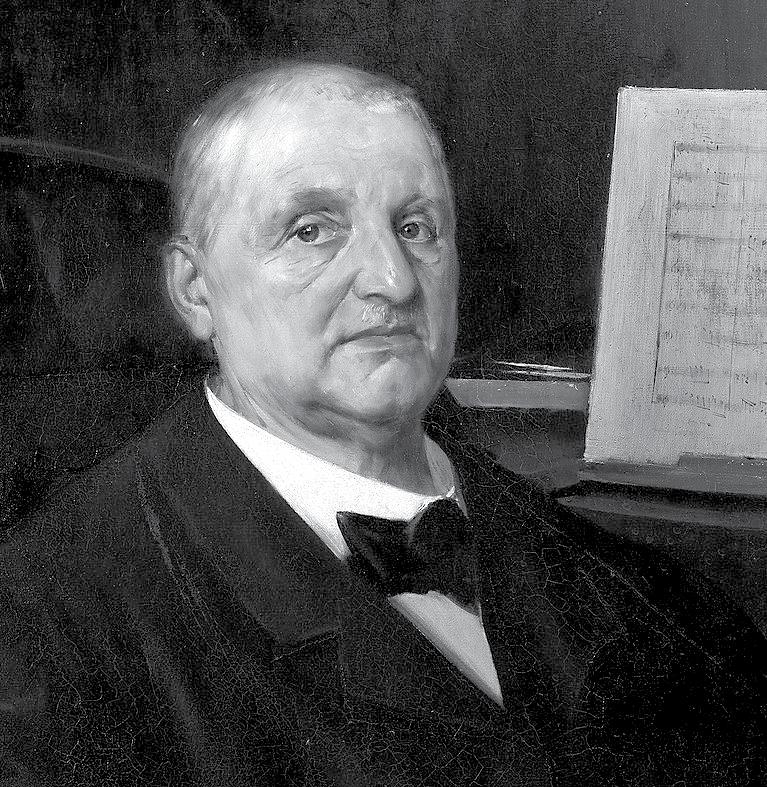
Born Sep. 4, 1824, Ansfelden Died Oct. 11, 1896, Vienna
Austrian composer Anton Bruckner’s home village of Ansfelden was small, so his parents sent him to nearby towns to expand his education and musical studies. When Bruckner’s father died in 1837, his mother sent him to Sankt Florian, about five miles east, to be a chorister at the St. Florian monastery. In this position, Bruckner regularly performed music by Michael Haydn, Joseph Haydn, and Mozart, getting
a firm grounding in Classical music. In 1840 he began training to be a teacher and eventually returned to St. Florian as a teacher, remaining there for ten years. Bruckner continued his music studies throughout these years and became known as an organ virtuoso; organ became his main profession in 1855 when he became the cathedral organist in Linz. Even as a professional musician, Bruckner continued taking lessons in counterpoint, form, and orchestration. In the 1860s, he was introduced to Richard Wagner’s music, which would remain a strong influence on Bruckner. Bruckner moved to Vienna in 1868 to teach at the Vienna Conservatory (and part-time at the University of Vienna), and it is during this time that he began to compose symphonies.
Symphony No. 3 in D minor exists in multiple versions, the first of which was composed October 1872–December 1873. In August 1873, Bruckner visited Wagner in Bayreuth and dedicated the symphony to—as Bruckner called him—the “Meister aller Meister.” Along with many other works, Symphony No. 3 was substantially revised 1876–1877. Unfortunately, the December 16, 1877, premiere of the work was a disaster, the audience even leaving the hall during the last movement. The press, led by critic Eduard Hanslick, derided Bruckner for being influenced by Wagner instead of just the First Viennese School of Classical composers. Despite the bad press and the failed premiere, Symphony No. 3 was set to be published in 1879, prompting more revisions to the second version. In the mid-1880s, Bruckner’s reputation was somewhat restored due to the increasing popularity of Wagner. In this more positive era of his career, Bruckner yet again revised Symphony No. 3 from 1887–89, with additional slight revisions in 1890. In this final version the second movement was substantially altered.
In the context of the full symphony, the slow second movement fits within the standard format, sitting between a sonata form first movement and a dance third movement. In the first two versions (1872–73; 1876–77, rev. 1878), the second movement has ABABA
form, but in the third version (1887–89), heard tonight, the movement is throughcomposed. In every version, the second movement begins with lush strings, the harmonic movement revealing Wagner’s influence. Bruckner’s dedication to Wagner is heard throughout the movement in the chromaticism, sudden dynamic changes, and the sustained tension before a climatic release. Bruckner also subtlety quotes Wagner’s Die Walküre as well as Tristan und Isolde , and—in the first version only— Lohengrin . The movement explores tension and release, ending in a peaceful pianississimo.

Born May 11, 1895, Woodville
Died Dec. 3, 1978, Los Angeles
William Grant Still, Jr. was born in Mississippi in his father’s hometown, where his parents had moved after marrying. Still’s mother—Carrie Fambro, an 1886 graduate of Atlanta University, a lifelong teacher, and a civil rights activist—was the
main influence in his life as his father died when Still was just four months old. In Still’s words, his mother “impressed [him] with the thought that [he] should achieve something worthwhile in life.” Though he enrolled in Wilberforce University to study medicine in obedience to his mother, Still was more interested in music, teaching himself multiple instruments and leading school ensembles. He withdrew from college in his senior year and began work as a professional musician, taking composition lessons at Oberlin Conservatory and working for W.C. Handy (the “Father of the Blues”), who introduced Still to African American musical genres that remained a permanent fixture in his music.
While his early style is extremely modernist, most of Still’s works, including the “AfroAmerican” Symphony, fall in what he called his “racial” style, which was consciously influenced by African American idioms. Still believed that the “natural practices” of African American musical traditions offered rich material for classical music and would allow new sounds and styles to develop. Still’s goal for the “Afro-American” Symphony was to write a symphony based on the blues, a distinctly African American musical genre. He stated that “[he placed] stress on a motif in [the] Blues idiom. It is employed originally as the principal theme of the first movement. It appears also in various forms in the succeeding movements, where [he] sought to present it in a characteristic (style) manner.” The English horn immediately introduces the melody, the lowered “blue” notes indicating the stylistic influence. A muted trumpet picks up the tune, accompanied by the traditional blues harmonic structure as the theme is passed through the orchestra. Entitled “Longing” in Still’s manuscripts, the first movement’s theme evokes a yearning and sorrowful feeling that is associated with the blues.
The Adagio second movement (“Sorrow” in the manuscript) has call and response between the strings and winds, showing an influence from spirituals. Still’s interest
in chromaticism is also heard in this movement, especially at the end of phrases. The Animato third movement has puzzled listeners and scholars alike for its quote of George Gershwin’s “I Got Rhythm,” unexpected in a symphony entitled “AfroAmerican.” Some have argued that Still was the original creator of that distinctive tune, which Gershwin heard as Still improvised within the pit orchestra of Shuffle Along. Still entitled the third movement “Humor” in his manuscript, perhaps hinting at some story but also drawing on the traditional scherzo (“joke”) for a symphony’s third movement. The final movement (“Aspiration” in the manuscript), is heavily modal, avoiding typical cadences. The woodwinds are the first to recall the first movement’s primary blues theme, echoed throughout the orchestra. In the published score of the work, each movement is also accompanied by
excerpts of poems by African American poet Paul Laurence Dunbar, who worked in the late nineteenth century and whose writings grapple with African-American identities.
The “Afro-American” Symphony premiered in 1931 by the Rochester Philharmonic Orchestra, becoming the first symphony composed by an African American to be performed by a major symphony orchestra, just one of many racial barriers Still broke in his lifetime. Now known as the “Dean of African American composers,” Still was active in the civil rights movement and worked against the overt and covert racism in the music industry and wider culture.
Program notes by Elizabeth Massey, Ph.D.



Brian Ganz is widely regarded as one of the leading pianists of his generation. A top prizewinner of the Marguerite Long–Jacques Thibaud Competition and laureate of the Queen Elisabeth Competition in Belgium, Mr. Ganz has appeared as soloist with orchestras throughout the United States, Europe, and Asia, including the St. Louis Symphony Orchestra, Baltimore Symphony Orchestra, National Symphony Orchestra, National Philharmonic, City of London Sinfonia, Orchestre Lamoureux, Orchestre Philharmonique de Monte-Carlo, St. Petersburg Philharmonic Orchestra, and the Taipei Philharmonic Orchestra. He has performed with notable
conductors such as Leonard Slatkin, Marin Alsop, Mstislav Rostropovich, and Yoel Levi, and has performed in some of the world’s major concert halls including the Beaux-Arts in Brussels, De Doelen in Rotterdam, Arena di Verona, Sibelius Academy in Helsinki, and Suntory Hall in Tokyo.
In January of 2011, Mr. Ganz began a monumental, multi-year project in partnership with the National Philharmonic to perform the complete works of Frédéric Chopin at the Music Center at Strathmore, concerts that have been widely hailed and performed before regularly sold out audiences. His February 2024 recital marks the
13th concert of the series. Other recent concert highlights include Chopin’s Piano Concerto No. 2 at the Alba Music Festival in Italy and with the National Philharmonic at Strathmore, Mozart’s Piano Concerto No. 20 with the Annapolis Symphony Orchestra, and Beethoven’s “Emperor” Concerto with the Billings Symphony. In September 2019 he made his theatrical debut at the Smithsonian’s Freer and Sackler Galleries in Whistler, Debussy and the Lecture that Changed Art, an imagined dialogue between artist James Whistler and a musician, played by Mr. Ganz. The theater piece explored connections between Debussy’s music and the artist’s “Ten O’Clock” lecture, and included excerpts from the lecture, dialogue written by Ganz, and live performances of works by Debussy and others. More
recently Mr. Ganz performed Mozart’s Piano Concerto No. 23 with the Virginia Chamber Orchestra at the new Capital One Hall in Virginia and appeared on the Distinguished Artists Concert Series of Santa Cruz, California.
Mr. Ganz made his recording debut on the Gailly label in Belgium. His recordings of Chopin and Dutilleux have been released on the Accord label in Paris. In 2001 he began a project to record the complete works of Frédéric Chopin for Maestoso Records. Mr. Ganz is artist-in-residence at St. Mary’s College of Maryland, and for 21 years was on the faculty at the Peabody Conservatory.
Artist Biography by Donald E. Osborne

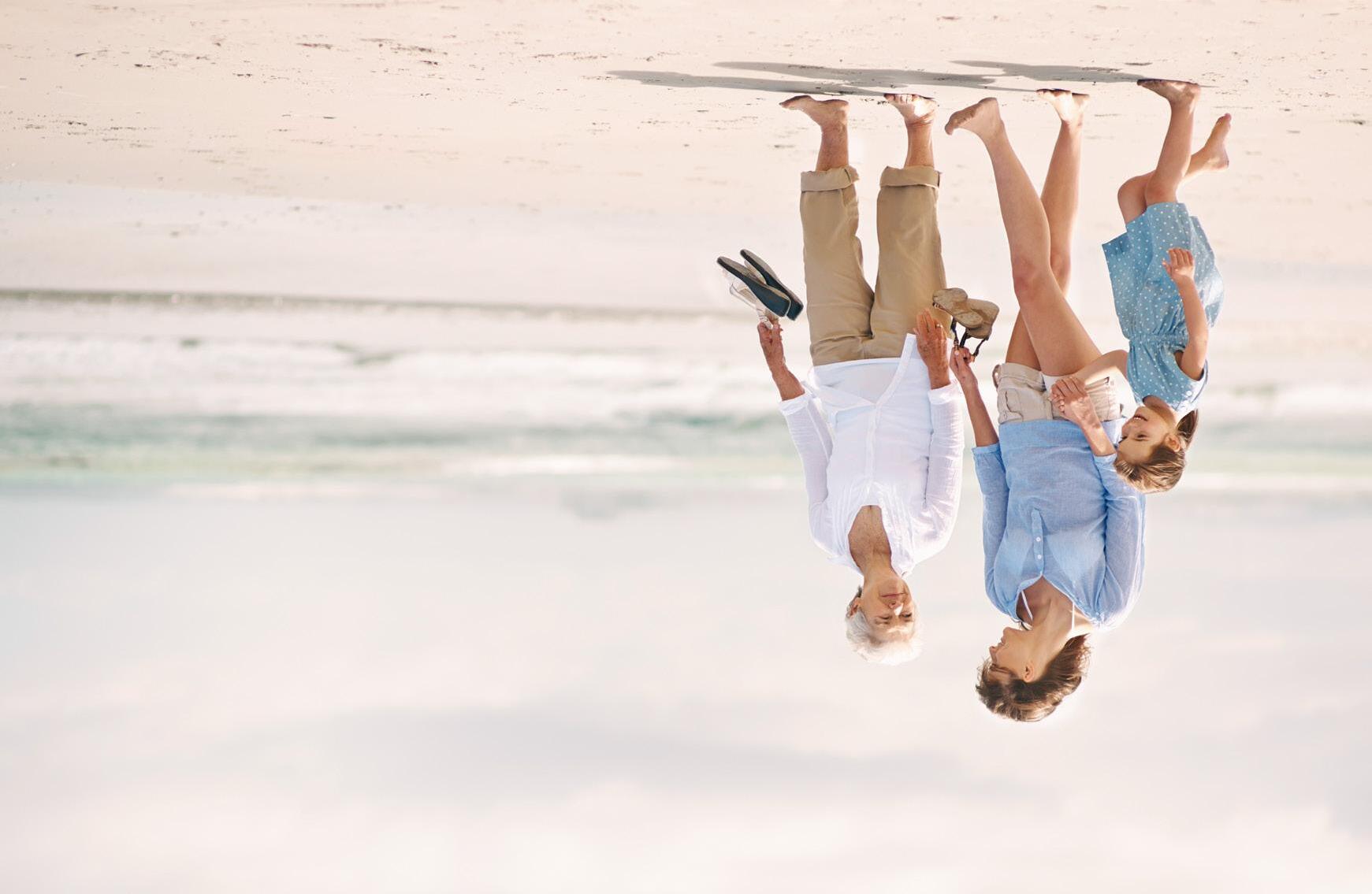



Dr. Laura Amodei Owner and Director


BEST TECHNOLOGY. Highest resolution low dose 3D mammograms in Maryland. Physician-performed high resolution ultrasound.
DEDICATED, FELLOWSHIP-TRAINED MDs. Our physicians trained at The Mayo Clinic, Hopkins, Stanford, and Yale and have focused exclusively on breast imaging for many years.
PATIENT-FOCUSED. Same day answers in a spa-like setting. New option for after-work appointments. Your comfort and peace of mind are our priority.
Call 410-544-3331 to schedule an appointment or learn more at www.bay-radiology.com.
THE PHILIP RICHEBOURG CHAIR
Spanish-born José-Luis Novo has instilled a new and vibrant artistic vision into the Annapolis Symphony Orchestra since his appointment as Artistic Director and Conductor of the Maryland-based symphony in 2005. Highlights of Novo’s tenure include numerous appearances at the Music Center at Strathmore with violinists James Ehnes, Anne Akiko Meyers, Leticia Moreno, and Chee-Yun, pianist Olga Kern, late cellist Lynn Harrell, guitarist Manuel Barrueco,
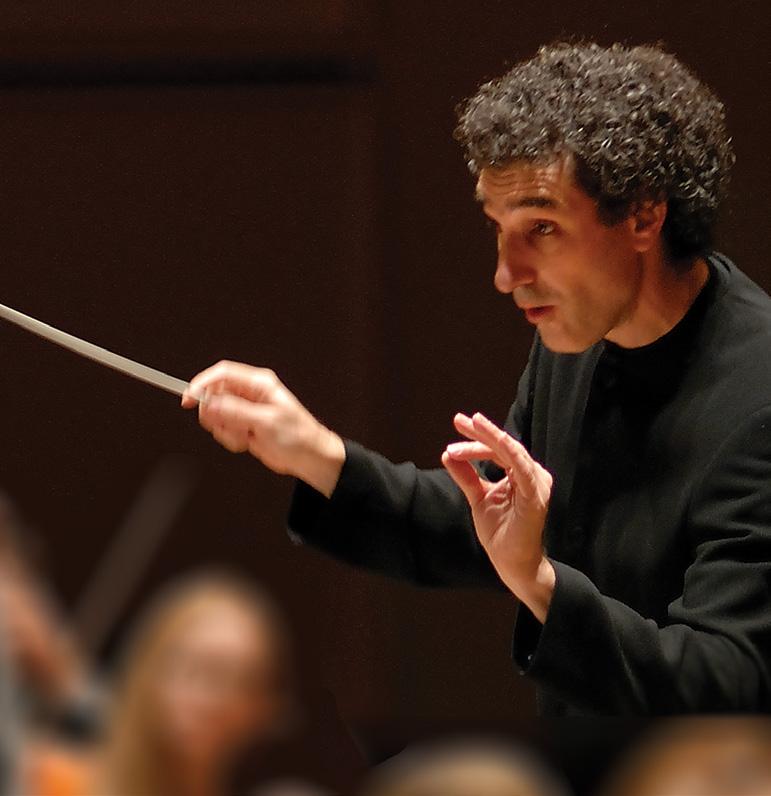
pipa virtuoso Wu Man, and the Naval Academy Glee Club. Also remarkable are a 2012 return appearance at the Clarice Smith Performing Arts Center with mezzo-soprano Denyce Graves, national broadcasts on NPR’s Performance Today, debut TV broadcasts on Washington’s WETA Metro PBS, the launching of the ASO’s award-winning streaming platform Symphony+, the creation of the Annapolis Symphony Academy, and the ASO’s first commercial CD commemorating the 300th anniversary
The Artistic Director’s Chair is graciously underwritten by Elizabeth Richebourg Rea, daughter of Philip Richebourg,
Annapolis Symphony Orchestra Co-Founder and First Board President (1967-1974).
“My father conducted every day of his life as if resolute in achieving perfect harmony. I can think of no greater legacy than naming the Artistic Director’s Chair after my father, Philip Richebourg.”
of the signing of the City of Annapolis’ Royal Charter. In July of 2022, Maestro Novo and the ASO stunned audiences on both sides of the Atlantic in a debut international tour to Spain with guitar virtuoso Pepe Romero as guest soloist. Maestro Novo’s continuous drive for artistic excellence, innovative thematic programming, and collaborations with some of today’s most respected guest artists keeps generating unprecedented artistic growth and enthusiastic reviews from publications such as The Washington Post and The Baltimore Sun
In addition to his directorship of the ASO, Maestro Novo held an impressive thirteen-year tenure as Music Director and Conductor of the Binghamton Philharmonic in New York state from 2003 to 2016. Prior to this, he served as Assistant Conductor of the Cincinnati Symphony Orchestra under both late Music Director Emeritus Jesús LópezCobos and former Music Director Paavo Järvi, and the Cincinnati Pops Orchestra under the late Erich Kunzel.
Recent and upcoming guest conducting engagements include debut appearances with the Rochester Philharmonic, the Grand Rapids, Hilton Head, Palm Beach, Alexandria, and South Bend Symphony Orchestras, and return appearances with the Baltimore Symphony, the Fresno Philharmonic, Symphoria, and a Kimmel Center debut in Philadelphia conducting the Curtis Institute Orchestra. After a successful debut with the Thailand Philharmonic Orchestra (TPO) for the Thailand International Composition Festival in 2015, Maestro Novo has been invited back regularly to guest conduct the TPO on several occasions. Other guest conducting engagements have included appearances with the Symphony Silicon Valley; the Minnesota Orchestra; the Syracuse, Modesto, Windsor, Stamford, Tulsa, and Tallahassee Symphonies; the Cincinnati Chamber Orchestra; the Cleveland and Abilene Philharmonics; and most of the major Spanish orchestras.
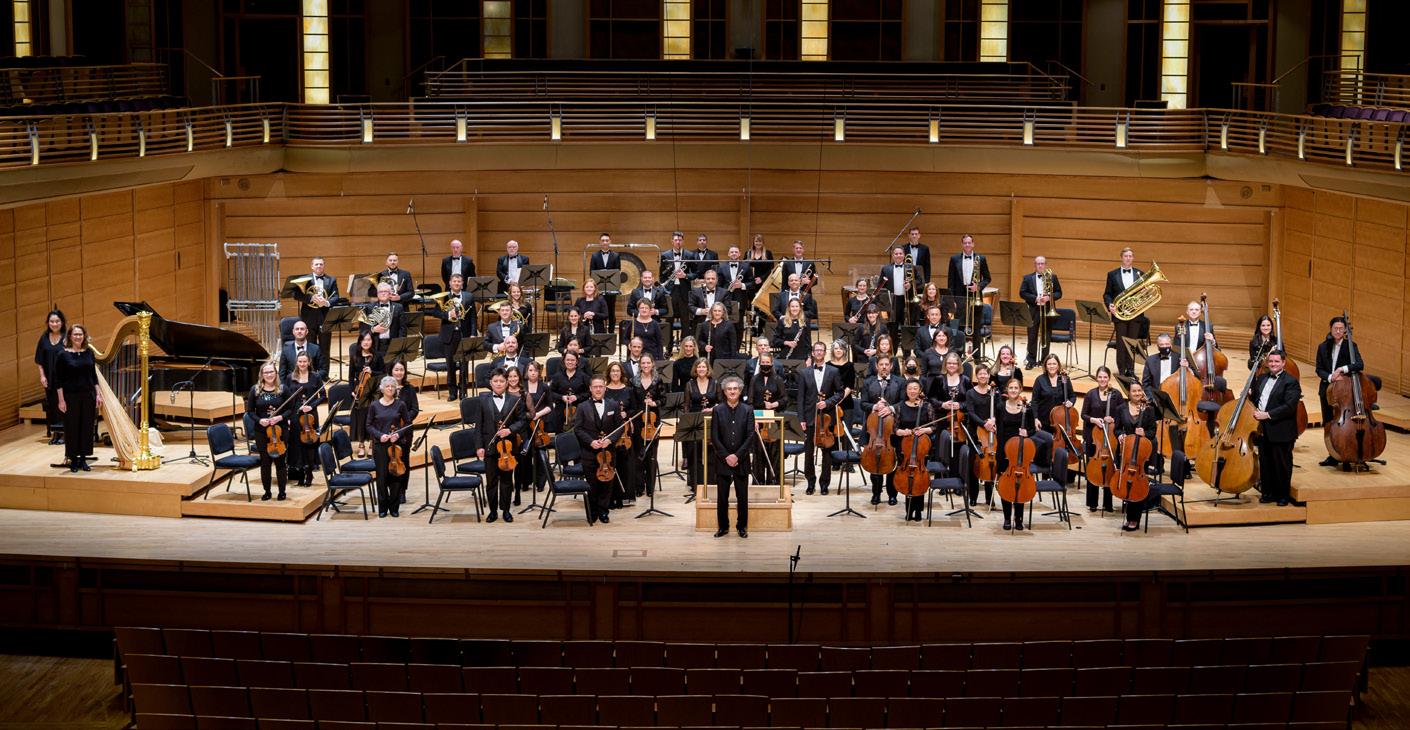
José-Luis Novo has also fostered a reputation as a keen educator of young musicians. He has held conducting positions with the Cincinnati Symphony Youth Orchestra, University of Maryland Symphony Orchestra, Miami University Symphony Orchestra, and National Repertory Orchestra, and has been on the conducting faculty at the Eastern Music Festival in Greensboro, North Carolina since 1999. In addition, he has conducted many noteworthy college and youth orchestras such as the Curtis Institute Orchestra, the Cleveland Institute of Music Orchestra, the Bard Conservatory Orchestra, the Ithaca College Symphony Orchestra, and the Portuguesa State Youth Orchestra of the Venezuelan El Sistema. Under the auspices of the Annapolis Symphony
Academy, he presided over the debut of its Orion Youth Orchestra, conducting the inaugural concert in June 2022. Maestro Novo was featured in the League of American Orchestras Symphony magazine in “Podium Powers,” an article about emerging Hispanic conductors in the United States of America. He holds music degrees from the Cleveland Institute of Music, Yale University, and the Royal Conservatory of Music in Brussels, and is the recipient of a 2010 Annie Award in Performing Arts from the Arts Council of Anne Arundel County, a 2008 American Society of Composers, Authors, and Publishers Adventurous Programming Award, and a 2005 Broome County Arts






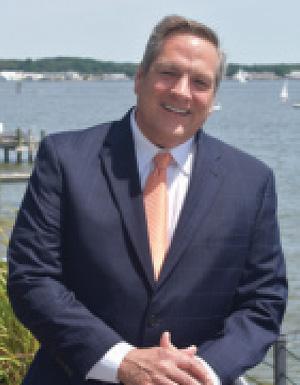

Annapolis Symphony Orchestra 2024-25

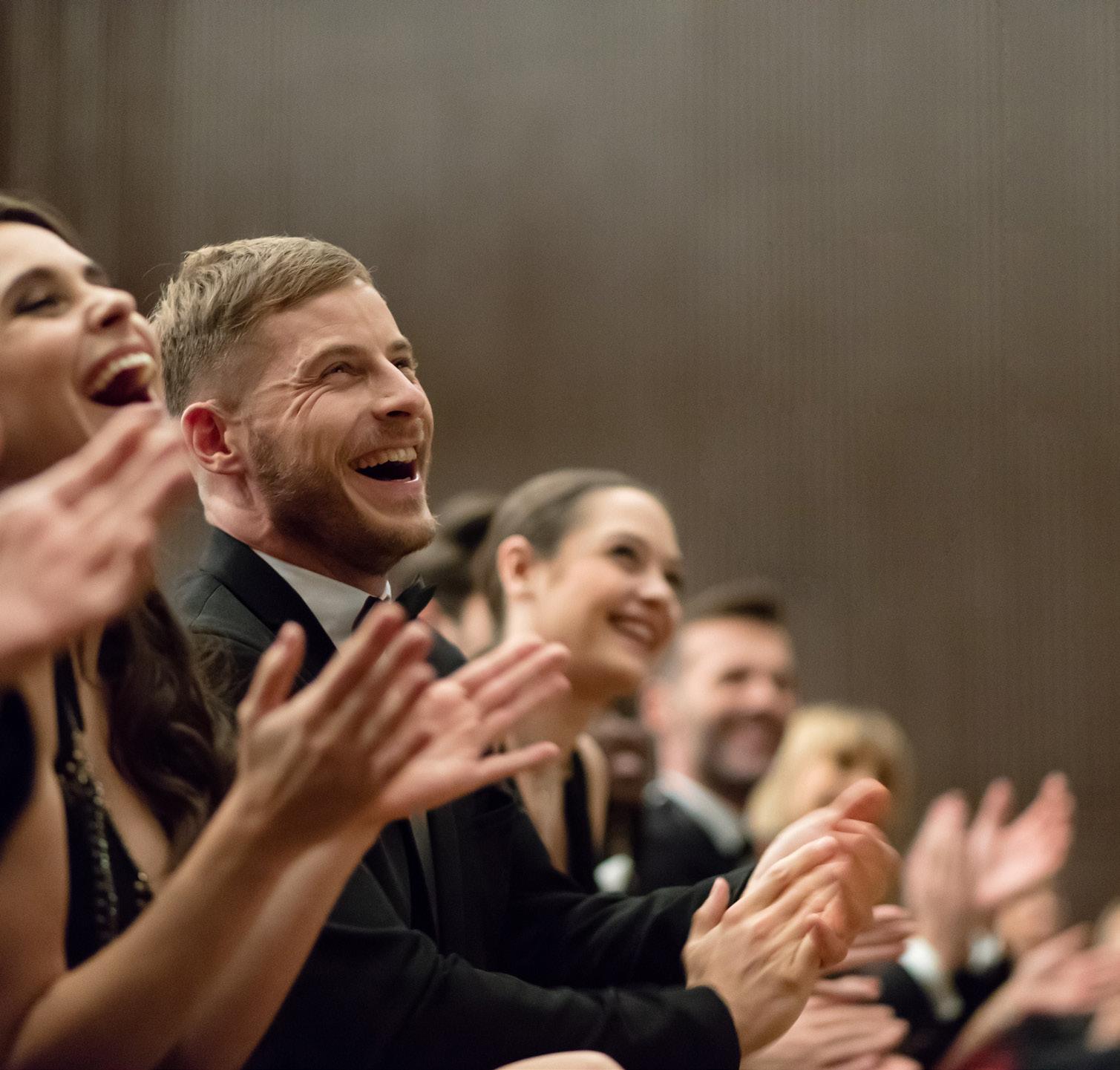


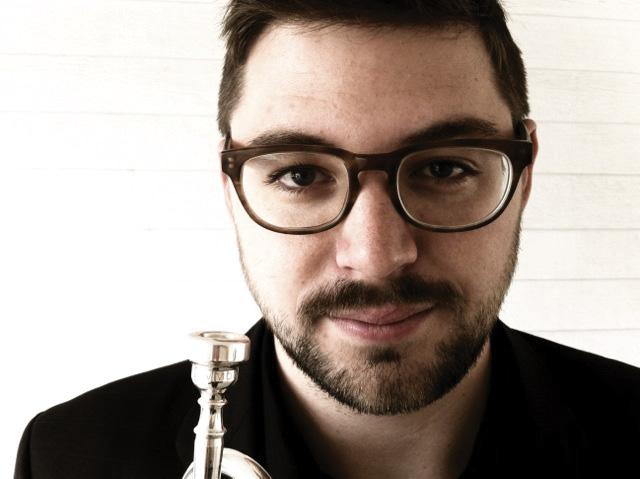
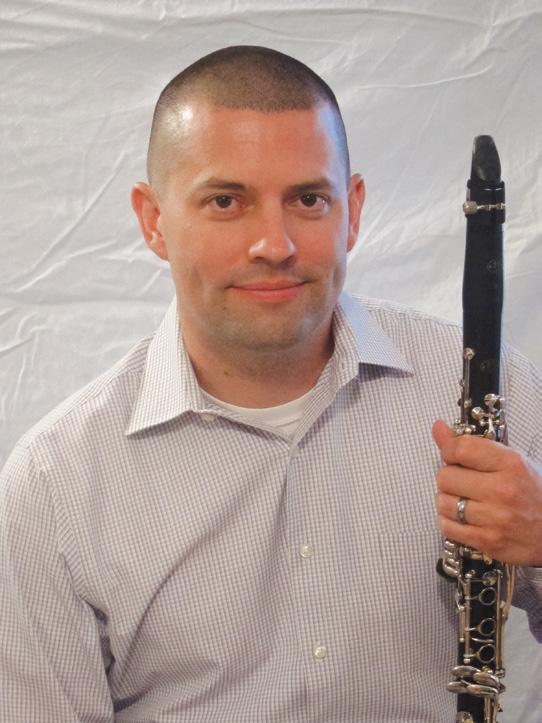












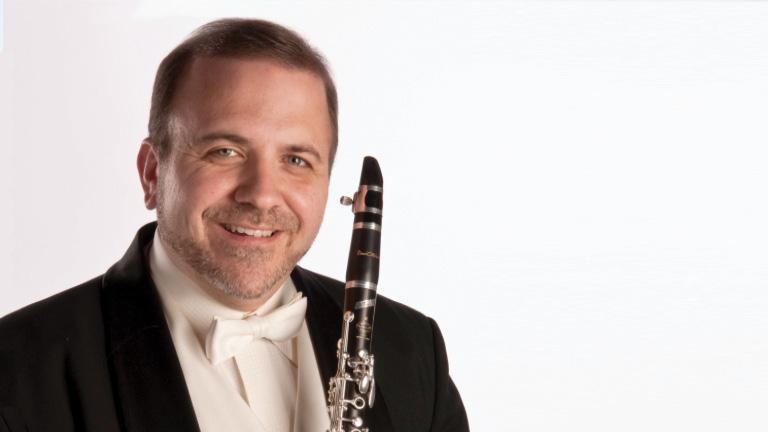

The following musicians retired from the ASO after the 2023-2024 season following decades of service. We thank them for bringing their skill and passion in so many memorable performances!
Viola (31 years)
DONALD SPINELLI
Principal Percussion (34 years)
Congratulations to the following musicians, who earned their tenure during Season 62!
PATRICK RAYNARD
Principal Bass
Associate Principal Bass
BRANDON SMITH Bass
WAN-CHUN HU
First Violin
Following a series of rigorous auditions, the following professional musicians joined our roster. We’re very excited to welcome them to the ASO family!
ASHA KLINE
Principal Bassoon
HO-HIN KWONG Second Horn
OCTOBER 31, 1947 –MARCH 18, 2024

KEVIN GRASEL
Assistant
Principal / Utility Horn
ANDREW ENG Viola
BRIAN SHOOP
Viola
Glenn Angus was a violinist in the Annapolis Symphony Orchestra for nearly 40 years, first joining ASO under Music Director Leon Fleischer – and played with the orchestra from 1970-77 and 1984-2014.
Glenn grew up in Long Beach, California in a highly musical family and began studying the violin at age 11. He received his Bachelor of Music Education Degree from Eastern Kentucky University, and his Master’s in Liberal Arts from Johns Hopkins University. He taught instrumental music in the Anne Arundel County Public Schools for 32 years and maintained a private violin studio in his home. He expanded into playing jazz around 2007, leading his own jazz ensemble, The Glenn Angus Jazz Quartet. He was a violinist with the Londontowne Symphony Orchestra until his death.
In addition to music, Glenn was also passionate about cycling. He rode with various cycling groups and was a recognized member of the Anne Arundel County Trail Blazers.
Join us in a campaign to get all 55 of our currently tenured musicians sponsored! Sponsoring a musician is a transformative way to show your support for the Annapolis Symphony Orchestra. It is a special opportunity to personally connect with an individual musician and deepen your connection to the symphony.
José-Luis Novo
The Philip Richebourg Chair
VIOLIN I
Netanel Draiblate, Concertmaster
Sponsored by Jillinda Kidwell
Nicholas Currie, Associate Concertmaster
Sponsored by Laird Lott & Linda Gooden
Abby Armbuster
Sponsored by Mimi Jones
Susan Benac Sponsored by Herb* & Sallie Abeles
Heather Haughn
Sponsored by Constance & William Scott
Rachael Stockton
Sponsored by Tara Balfe Clifford
VIOLIN II
Kristin Bakkegard, Associate Principal Sponsored by Stephen A. Sotack
Karin Kelleher
Sponsored by Prudence Clendenning
Alexandra Mikhlin
Sponsored by Anna E. Greenberg
VIOLA
Derek Smith, Associate Principal
Sponsored by Al & Ginger From
Todd Thiel, Principal
The Philip Richebourg Chair
Alison Bazala Kim
Sponsored by Dr. Elizabeth Maxwell-Schmidt & Mr. Steve Schmidt
Nicole Boguslaw
Sponsored by Norman J. Fisher & Doris Fisher Foundation
Catherine Mikelson
Sponsored by Patrick M. Green
MaryAnn Perkel
Sponsored by Florence Calvert
Daniel Shomper
S ponsored by Paula Abernethy
April Studeny Sponsored by Judith Templeton
BASS
Patrick Raynard, Principal Sponsored by Collot Guerard
Peter Cohn
Sponsored by Anne S. Potter
FLUTE
Kimberly Valerio, Principal
Sponsored by William Seale & Marguerite Pelissier
Genevieve Eichman, Sponsored by Russ Stevenson & Margie Axtell
OBOE
Fatma Daglar, Principal The Sage Tower Mumma Endowed Chair
Oboe cont.
Rick Basehore, Sponsored by William & Renata Davis
CLARINET
Robert DiLutis, Principal Sponsored by Shelley Row
BASSOON
Patricia Morgan
Sponsored by Ann & Robert Whitcomb
HORN
Alex Kovling, Principal
Sponsored by Martha & John T. Schwieters
Anthony Valerio
Sponsored by Carole & Richard Falk
TRUMPET
Christopher Sala, Principal The Philip Richebourg Chair
TROMBONE
David Perkel, Principal Sponsored by David & Eleanor Huggins
David Sciannella
Sponsored by Robert & Kathleen Arias
Jay Heltzer, Bass Trombone
Sponsored by Peter Bungay, Joy Chambers & Ellen Posten
* Deceased
Thank you to our generous sponsors. If you’re interested in sponsoring a musician, please visit www.annapolissymphony.org/support or email development@annapolissymphony.org.
It is with our deepest gratitude that we acknowledge the following Legacy Circle Members for their commitment to the future of the Annapolis Symphony Orchestra and its place in our community.
Anonymous (3)
Melvin &
*Judy Bender
Bud & *Bee Billups
Elana Rhodes Byrd
James W. Cheevers
Elizabeth Colandro
Ronald E. Council
*Forbes Leland & *Marilyn Eason
*Patricia Edwards
*Colonel Allan &
*Audrey English
Patrick M. Green
Anna E. Greenberg
*Joe Bales Gruber
*Nancie Kennedy
*Dr. Michael Kurtz
Dr. Mary C. McKiel
*Mr. John P. McKim
Anne S. Potter
Susan Rosenfeld
Shelley Row
Stephen A. Sotack
To discuss including the Symphony in your Estate Plans, please contact development@annapolissymphony.org Annapolis Symphony Orchestra Inc. Tax I.D. 23-7001357 Make your
We gratefully acknowledge these generous donors to the Annapolis Symphony Orchestra who have contributed to this fiscal year.
The Annapolis Symphony Orchestra is sustained through your generous support. We are indebted to you for supporting our music making, education programs, and community initiatives.
GIFTS OF $1 MILLION + John McKim*
Joyce Pratt & Jeff Harris + William Seale & Marguerite Pelissier
THE PHILIP RICHEBOURG CIRCLE
GIFTS OF $500,000 – $999,999
Elizabeth Richebourg Rea +
GIFTS OF $250,000 – $499,999
Robert & Kathleen Arias +
GIFTS OF $150,000 – $249,999
The Brian & Patricia Giese Foundation
Jillinda Kidwell + Maryland State Arts Council
Michael J. Mumma, Peter R. Mumma, & Amy Mumma R askopf +
GIFTS OF $50,000 – $149,999
Anonymous + Paula Abernethy + Jane Campbell-Chambliss & Peter Chambliss
James W. Cheevers +
Mr. Arthur & Dr. Katherine Edwards +
Laird Lott & Linda Gooden
Impact100 +
Anne S. Potter + Shelley Row + Stephen A. Sotack +
GIFTS OF $25,000 –$49,999
Anonymous
Anne Arundel County
Recreation & Parks
Arts Council of Anne Arundel County
Elville Center for the Creative Arts +
Peter & Sarah Evans + Al & Ginger From +
David & Eleanor Huggins
Mimi Jones + Patricia & David Mattingley +
Martha & John T. Schwieters +
GIFTS OF $10,000 – $24,999
Florence Calvert + Deb Howe + Dr. Elizabeth MaxwellSchmidt & Mr. Steve Schmidt + Judith Templeton + Ann & Robert Whitcomb +
GIFTS OF $5,000 – $9,999
Peter Bungay, Joy Chambers & Ellen Posten
Hugh D. Camitta
Prue Clendenning
William & Renata Davis + Norman J. Fisher & Doris Fisher Foundation
Collot Guerard
Capt. Mark & Michelle Hellstern (USN Retired) +
Gifts of $5,000 - $9,999 cont.
Lawrence & Jeanne Kelly
Evelin Reynolds*
Russ Stevenson & Margie Axtell
GIFTS OF $2,500 – $4,999
Herb* & Sallie Abeles
Dea Code Family Foundation
Carole & Richard Falk
Patrick M. Green
Anna E. Greenberg
Pierre & Danalee Henkart
Jan & David Hoffberger
Constance & William Scott
Doug & Karen Smith + Fred Stielow & Susan Rosenfeld
Bill & Marilynn Sweetser
Judith Templeton + MULTIYEAR PLEDGES
Multiyear pledges support the Orchestra’s strategic vision while ensuring a sustained level of funding. Thank you to everyone for signing pledge commitments of three years or more. These donors are recognized with a + beside their name.
GIFTS OF $1,000 – $2,499
Anonymous (2)
Michael Alin & Ann Carroll
Annapolis Musicians Fund for Musicians
Renee Ehler & George Bentley
Enser & Marguerite Cole
Mr. & Mrs. Robert Demoyer
Elizabeth Gordon-Bluntschli
Bob & Diane Heaney
Mr. & Mrs. Robert M. Hecht
Hugh & Deborah Houghton
Katherine Lantz
David McGill
James E &
Cheryl H Painter
Patricia Petrou
Ms. Barbara Pittman
Rotary of Annapolis
Cynthia Scruggs
Mrs. Tamara & Dr. Stephan Tymkiw
Linda Allen
Sandra Collyear Altherr
Ms. Susan Armstrong
Adele Baron
Randal Billingsley
Pat & Karen Brown
Carmen & Nancy Brun
Carole Burchette
Elizabeth Colandro
Petey Cosby
Susan Craig
Laudine Creighton
Dr. Albert A. Del Negro, M.D., FACC, &
Ms. Patrisha C. Creevy, PA-C
Carl DeVore
Fred & Susan Eckert
James R. Fitzpatrick
David & Cindy Fox
Frances R. Hall
Georgina Hammond
Patty Harris
D. Gayle Hensley
Gretchen Herdt
Paul Herman & Karen Goldman
David R. Herron, Ph.D.
Marian Holt
Mr. & Mrs. Jerry Hoot
Dr. & Mrs. William Hunter
Kevin Hurley & Kathleen McDevitt
Christine Kelsey
Leon & Barbara Kestenbaum
Julia Krause
Susanne Lieberman
Elizabeth Mainiero
Lynne Malley
Dr. Mary C. McKiel
Don & Carol Nelson
David & Carol Newman
Stanton Palmer
Fariba Partawi
Bob & Cookie Pollock
Michael & Margret Rauh
Ken & Maureen Reightler
John & Constance Robinson
Janet & Michael Rowan
Joan Russell
Bob Sherer
We make every effort to ensure accuracy. If you notice an error, omission or would like to be recognized in a different way, please let the Symphony staff know at your earliest convenience. The Annapolis Symphony Orchestra greatly appreciates all contributors of any amount.
The Annapolis Symphony Orchestra is funded by operating grants from the Maryland State Arts Council, an agency dedicated to cultivating a vibrant cultural community where the arts thrive, and the Arts Council of Anne Arundel County, which receives public support from Anne Arundel County, the City of Annapolis, and the Maryland State Arts Council. Funding for the Maryland State Arts Council is also provided by the National Endowment for the Arts, a federal agency which believes that a great nation deserves great art.
Anne Sloan
Paula Thistle
Peter Threadgill
GIVING continued
Christine Trapnell
Laura & Jack Van Geffen
Mark Wynn Gifts of $100 - $999 cont.
Joan Townshend
Mr. & Mrs. Damien Wanner
Cynthia Wells
Claire Winestock
Bradley Wirz
Francis & Maureen Wright
Bernard & Louis Wulff
In memory of Marion Borsodi
Sandra Collyear Altherr
In memory of Louise A. Snyder
Hugh D. Camitta
In memory of Ralph Bluntschli
Elizabeth Gordon-Bluntschli
In honor of Rachael Stockton Rene Shumate
Generous friends of Howard and Thea Pinskey established a scholarship fund in their memory dedicated to providing financial assistance to students in the Annapolis Symphony Academy. The Annapolis Symphony Academy will also add funds given in memory of Howard and Thea Pinskey to this scholarship fund in their memory. If you would like to contribute to this fund, visit www.annapolissymphony.org/support.


FASO is a dynamic group of music lovers who support the Annapolis Symphony Orchestra. FASO fundraising events include the Concert of Tastes, Historical Happy Hour, themed dinners, Dine-toDonate, Movie & Trivia Nights, wine tastings at local vineyards, international trips and much more. FASO collaborates with the Annapolis Symphony Academy to provide grants that expand programming and provide scholarships. FASO efforts expand beyond Annapolis. FASO recently sponsored the featurelength film Sing to Me Sylvie, which won the Spotlight Award from the Volunteer Council of the League of American Orchestras. Join us! Become part of the fun while helping to benefit the Annapolis Symphony Orchestra and rising artists. IT IS EASY TO JOIN - VISIT ANNAPOLIS SYMPHONY.ORG
Membership: $50 per person | $75 per couple Contact info: 410-267-3646 friends@annapolissymphony.org

2024-2025 Board of Directors
Officers/Executive Committee:
Ann A. Tran, President
Marguerite Cole, Vice President
Ways & Means
Paula Abernethy, Vice President
Membership
Julie S. Grudzinskas, Treasurer
David Bush, Recording Secretary
Carol Richards, Corresponding Secretary
Directors:
Adele Baron
John Andryszak
Adele Baron
Jim Cheevers
Betsy Chotin
Kathy Clatanoff
Renee Ehler
Robert Foye
Elizabeth
Gordon-Bluntschli
Diane Green
Patrick Green
Anna E. Greenberg
Valerie Gutterson
Stephen Holt
Marilyn Lyons
Lynn Maichle
Mary McKiel
Rick Sullivan
The Friends of the Annapolis Symphony Orchestra is a 501(c)(3) organization. Dues and donations are tax deductible to the fullest extent of the law, providing no goods or services are realized by joining.
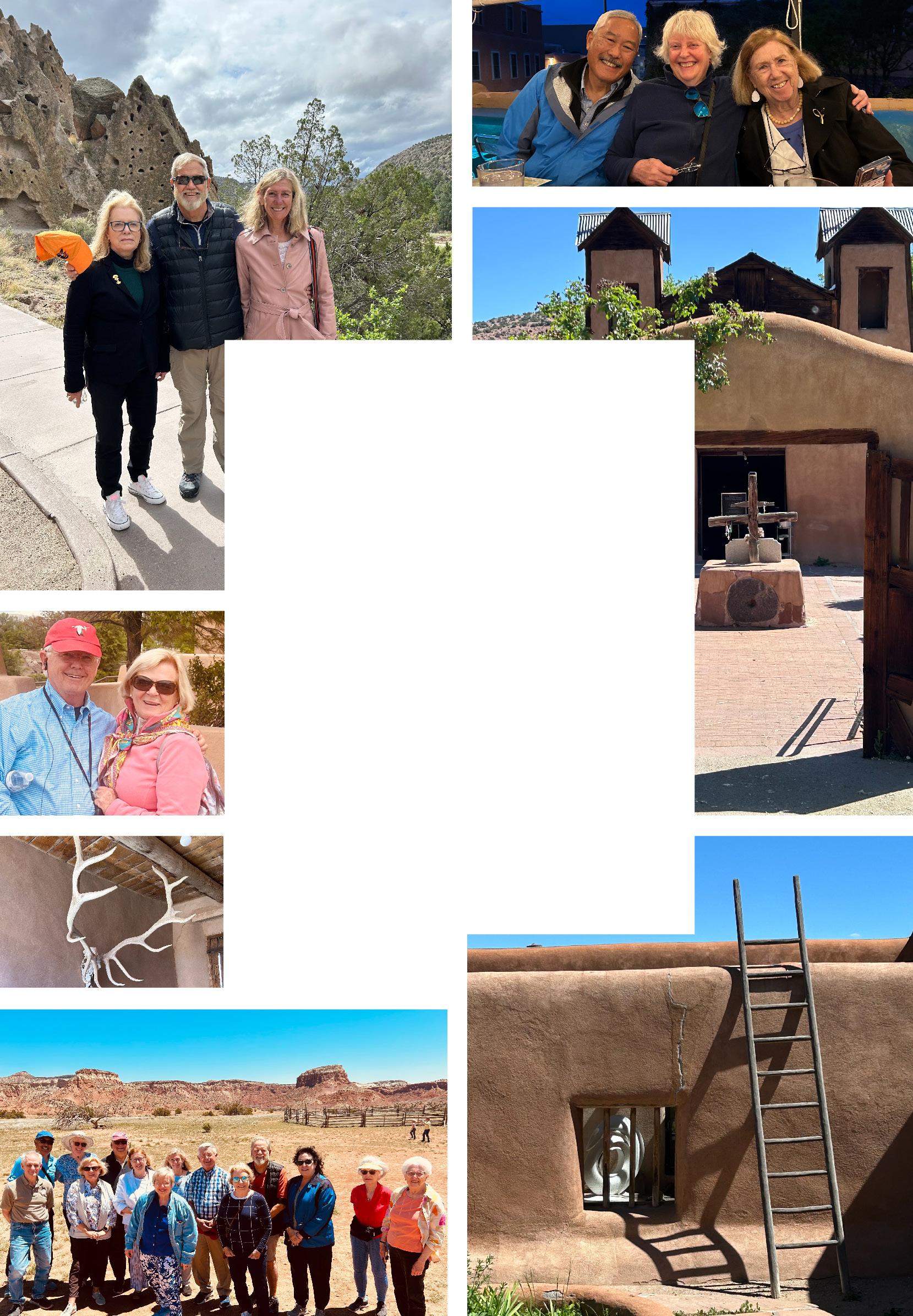
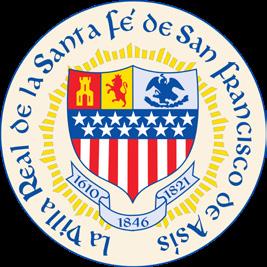
With an easy flight from BWI to Albuquerque we set off on our Domestic tour to Santa Fe. The tour included so many highlights that the Southwest offers, with clear blue skies and stunning landscapes. The music component included a memorable concert with the Santa Fe Symphony playing Beethoven’s 9th Symphony; a visit to a Pueblo to visit the famed guitarist Cipriano Vigil with private musical performance and an evening recital with the soloist Ana María Martínez singing with the Santa Fe Symphony String Quartet.
Artistic and cultural visits included a tour of Georgia O’Keeffe’s ranch followed by a private docent led tour of the Georgia O’Keeffe art museum; Centinela Traditional Arts gallery showcasing traditional weavers; a Pueblo San Ildefonso visit and lunch at the home of renowned potter Russell Sanchez with a behind-the-scenes attendance at the firing of his prepared pots and the ancient cave dwellings in the Bandelier National Park.
Visits to Santa Fe’s gourmet restaurants and stunning shopping streets rounded out this first rate fantastic tour that was thoroughly enjoyed.


In August, seventeen music lovers and Maestro José-Luis Novo hopped across the pond for ten memorable days in London and Sussex. It was the much-anticipated BBC Proms that drew Maestro, members of FASO, and their guests to the United Kingdom. We were treated to Benjamin Britten’s “War Requiem” and “Lahav Shani Plays & Direct Prokofiev” at the Royal Albert Hall, both curated by Maestro Novo. We even chanced upon Evensong at Westminster Abbey before heading south to the Glyndebourne Festival for a poignant contemporary staging of Bizet’s “Carmen”. We all loved the peoplewatching. While we Annapolitans were not decked out in black ties and glitzy gowns, we had our own private corner for pre-concert champagne and canapés, then a three course dinner during the 90-minute long intermission.




The musical treats went behind the scenes with private backstage tours of the Royal Opera House and Royal Albert Hall. At the Royal Academy of Music Museum, we were entertained by students playing on centuries old instruments. Finally, one cannot visit England without seeing Stonehenge, the Magna Carta, gardens and of course Chartwell, home of Winston Churchill. Wine tasting at Denbies Vineyard, afternoon tea, picnic and dinners pulled us all together, enhancing the camaraderie while sharing in the joy of music.



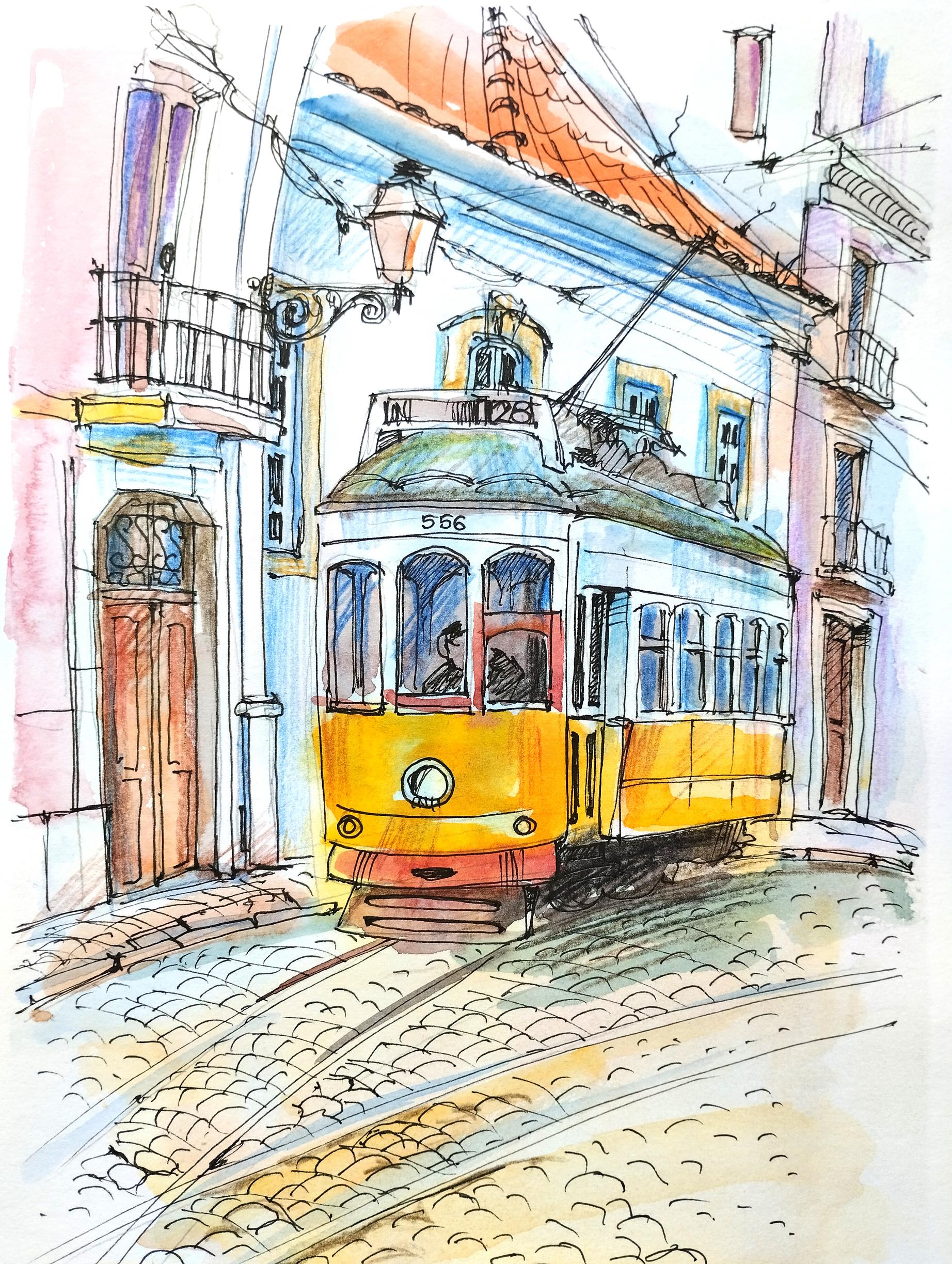
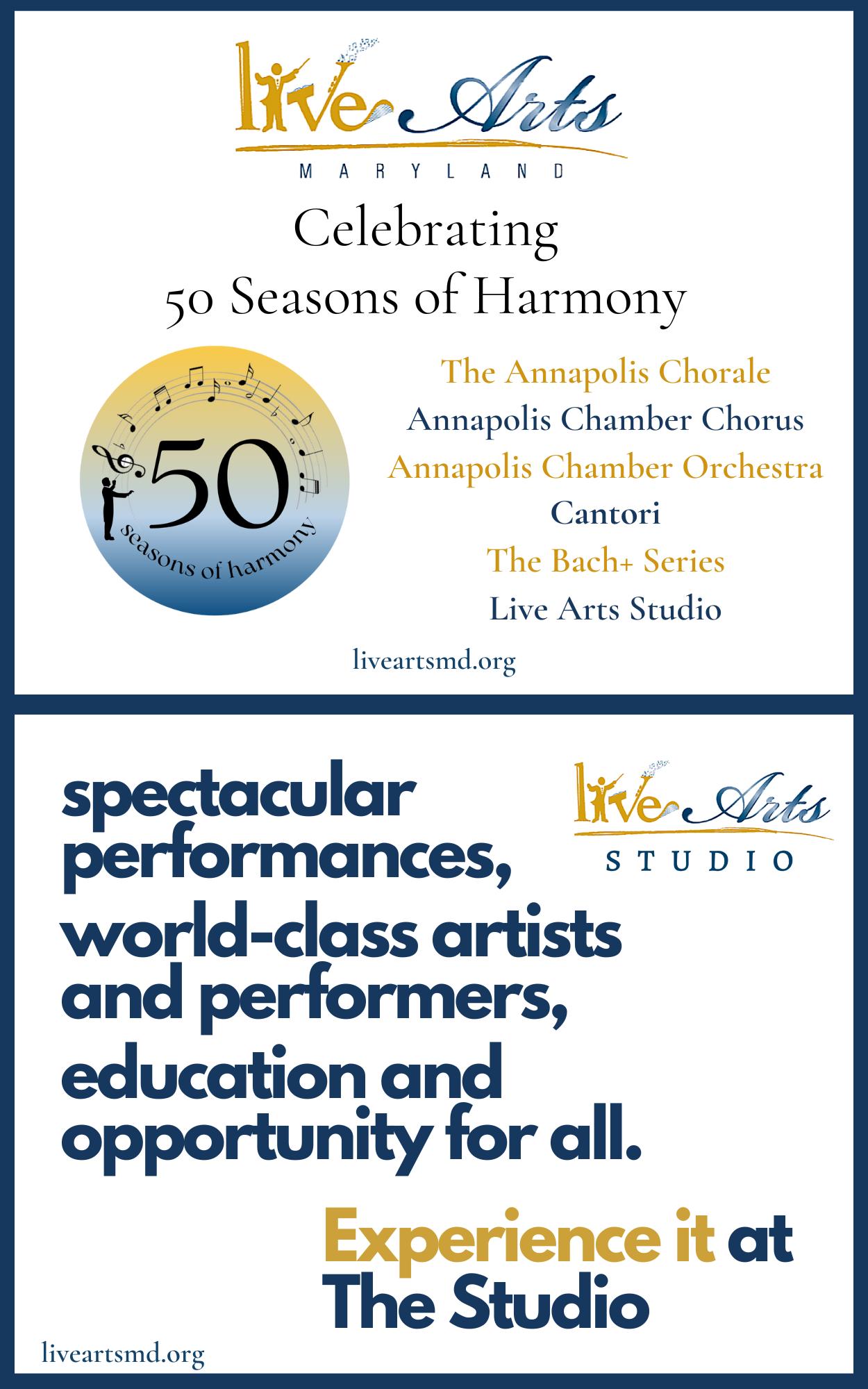
Use of cameras or recording devices during the performance is strictly prohibited.
Latecomers will only be seated at the conclusion of a musical selection.
Annapolis Symphony Family Concerts are designed for ages four and up. The Symphony recommends that children be at least age eight to attend a Masterworks or Pops concert.
Please note the nearest exit to your seat. In the event of fire or another emergency, WALK — do not run — to that exit.
In the event of severe weather, every effort will be made to continue with scheduled concerts. No refunds will be given if a concert is performed during severe weather but not attended by the ticket holder.
Maryland Hall is a smoke-free facility. Smoking is prohibited in and on the grounds of the building.
Enjoy a beer or glass of wine before the concert and at intermission in room 206. Cash and credit cards are accepted and drinks are allowed in the concert hall.
Parking, ramp, and elevator facilities are available at the entrance nearest Spa Road. Wheelchair accessible seating is also available. Please call 410-263-0907 to make arrangements.
Subscribing to the Masterworks Series at the Annapolis Symphony Orchestra is the best deal around! As a subscriber you get exclusive access to a 20% discount on single tickets, priority seating, and free exchanges. Subscriptions are available for all 5 Masterworks concerts as a full series or 3 or 4 concerts as a Flex Pass. Learn more at annapolissymphony.org/ subscribe.
Whether it’s your first or fifth time at the Symphony, single tickets are always available for purchase! Tickets can be purchased online at annapolissymphony. org/events or by calling the Symphony Box Office at 410-263-0907.
We are dedicated to making your group‘s visit to the Annapolis Symphony a memorable experience. With a group of 10 or more, receive a 15% discount on all tickets.
Subscribers may exchange their tickets for the alternate performance of the same concert only. Exchanges are subject to availability.
Subscribers may donate tickets back to the Symphony as a tax-deductible contribution. We will mail you an acknowledgement letter for your donation.
There are no refunds and all ticket sales are final. If there are changes to the program, ticket holders will be contacted with options.

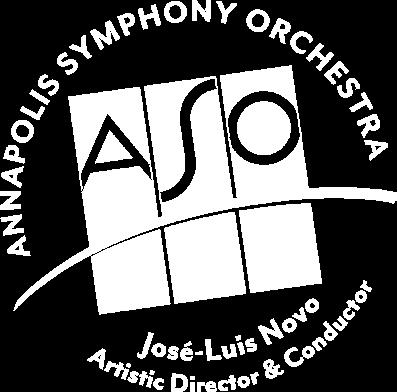
SYMPHONY . ORG